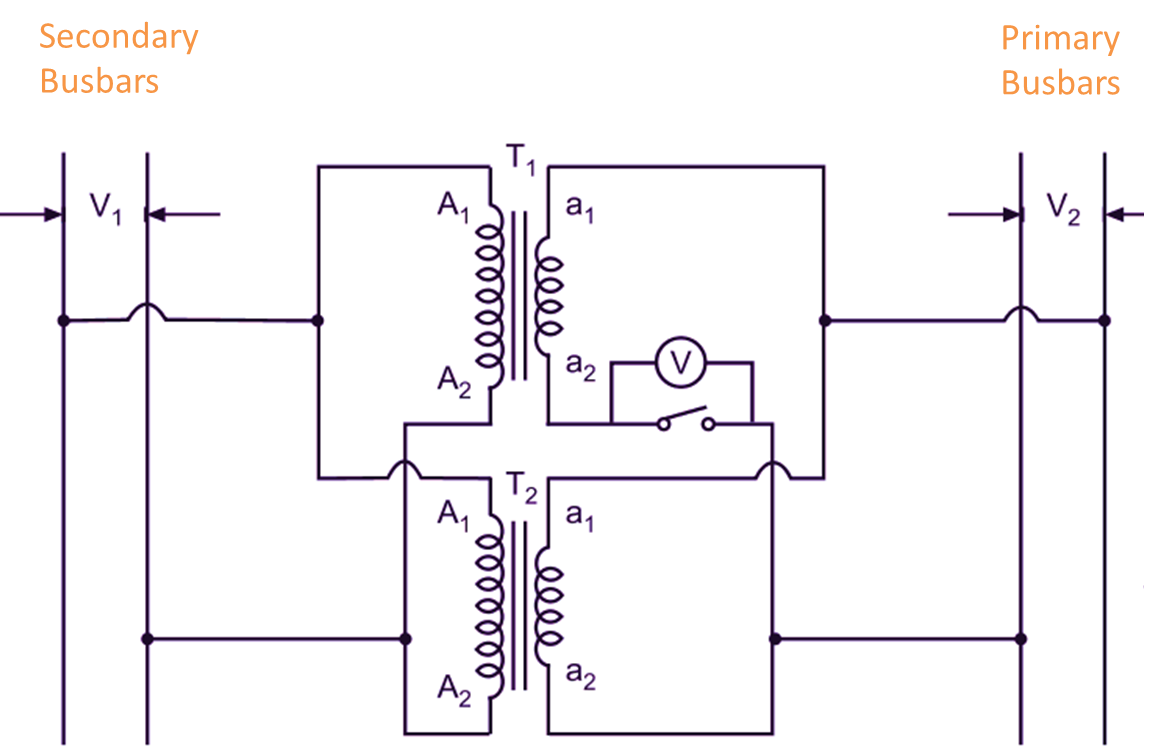In this topic, you study Parallel Operation of Transformer.
When the amount of power to be supplied becomes greater than the capacity of an existing transformer, it is possible to meet this requirement by replacing the existing transformer by another transformer of a higher rating. But in practice, under such a situation, it is always preferred to install another transformer and run it in parallel with the existing transformer.

Fig. 1: Parallel operation single phase transformers.
Conditions for Parallel Operation of Single phase Transformers
The important conditions which must be fulfilled for satisfactory parallel operation of single phase transformers are as follow:
Suitable Primary Voltage and Frequency Ratings: Primary windings of the transformers should have suitable voltage and frequency ratings for their connection to supply system.
Same Polarity: The transformers should be properly connected with regard to their polarity. This is an essential condition. When properly connected (Fig. 3.45), the net voltage around the local loop formed by two transformer secondaries is nearly zero (assuming the transformers with equal voltage ratios). A wrong polarity connection results in a dead short circuit. Correctness of connections can be checked with the help of a voltmeter connected across the switch as shown in Fig. 1. If the connections have been made with like polarities joined together, then the voltmeter reading will be zero. If the connections are made for reversed polarities, the voltmeter reading will be twice the secondary voltage.
Same Voltage Ratio: The transformers must have the same voltage ratio (or turn-ratio). If the voltage ratios (or turn-ratios) of the two transformers are not equal, a circulating current will flow between the transformers even at no load. This will reduce the capacity of the transformers supplying a common load and cause extra loss. In practice, it is difficult to manufacture two exactly identical transformers. But as long this difference is small, the transformers will work satisfactorily in parallel.
Same Percentage Impedance: If the percentage (or per unit) impedances of the two transformers are not equal, their parallel operation will still be possible. But the two transformers will not share the load in proportion to their kVA ratings.
Same Ratio of Resistance to Reactance: For satisfactory parallel operation, the other desirable condition is that the ratios of the total effective resistance to total effective reactance for the transformers should be equal. If this condition is not exactly satisfied, the two transformers will operate at power factors different from the power factor of the common load.
Advantages of Parallel Operation of Transformers
The parallel operation of the transformers has the following advantages.
- When the power to be transformed outgrows the capacity of an existing transformer, installation of another transformer in parallel with the existing transformer is always economical as compared to replacing the existing transformer with a single larger unit.
- In a new installation, two small units in parallel, though more expensive, is generally preferred over a single large unit for the reason of reliability. This is because at least half of the load can be supplied with one unit out.
- The cost of maintaining a spare unit is less with two small units in parallel. A spare unit is always necessary to ensure continuity of service.